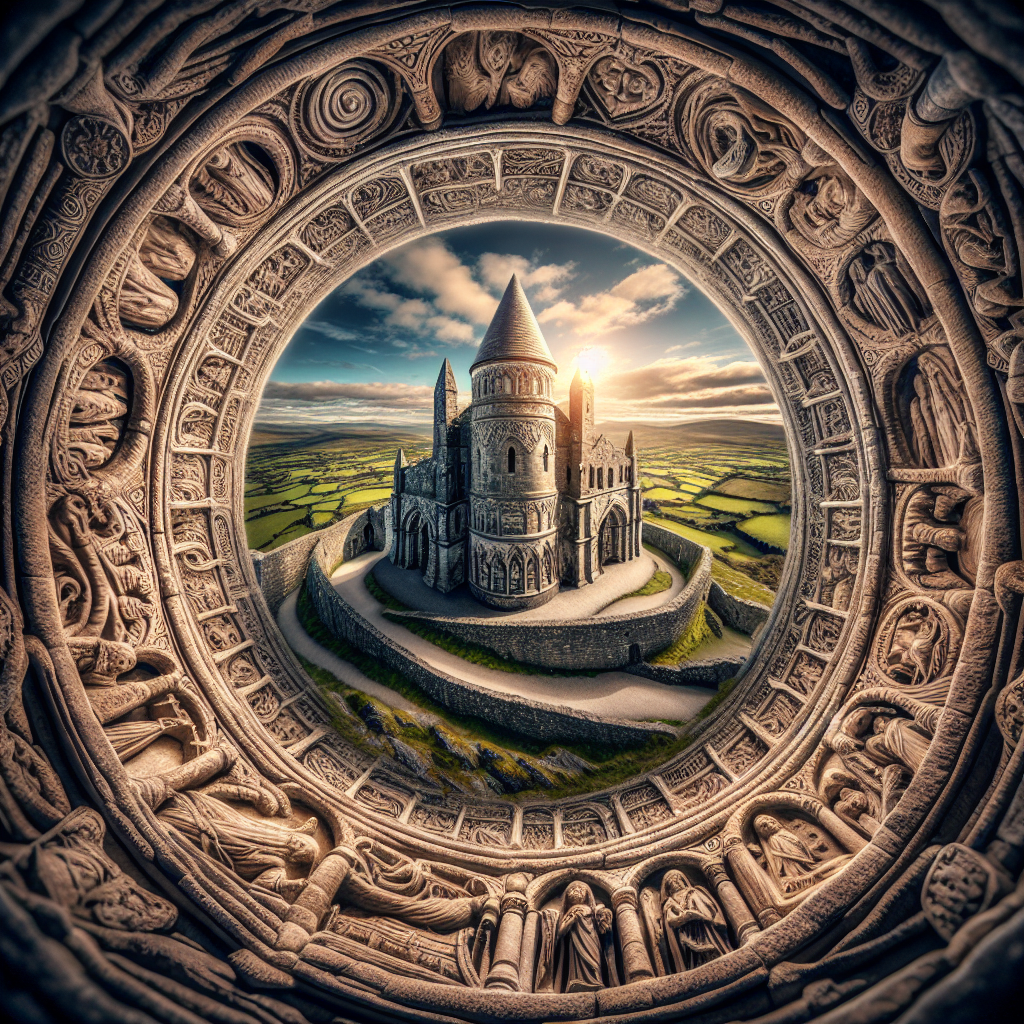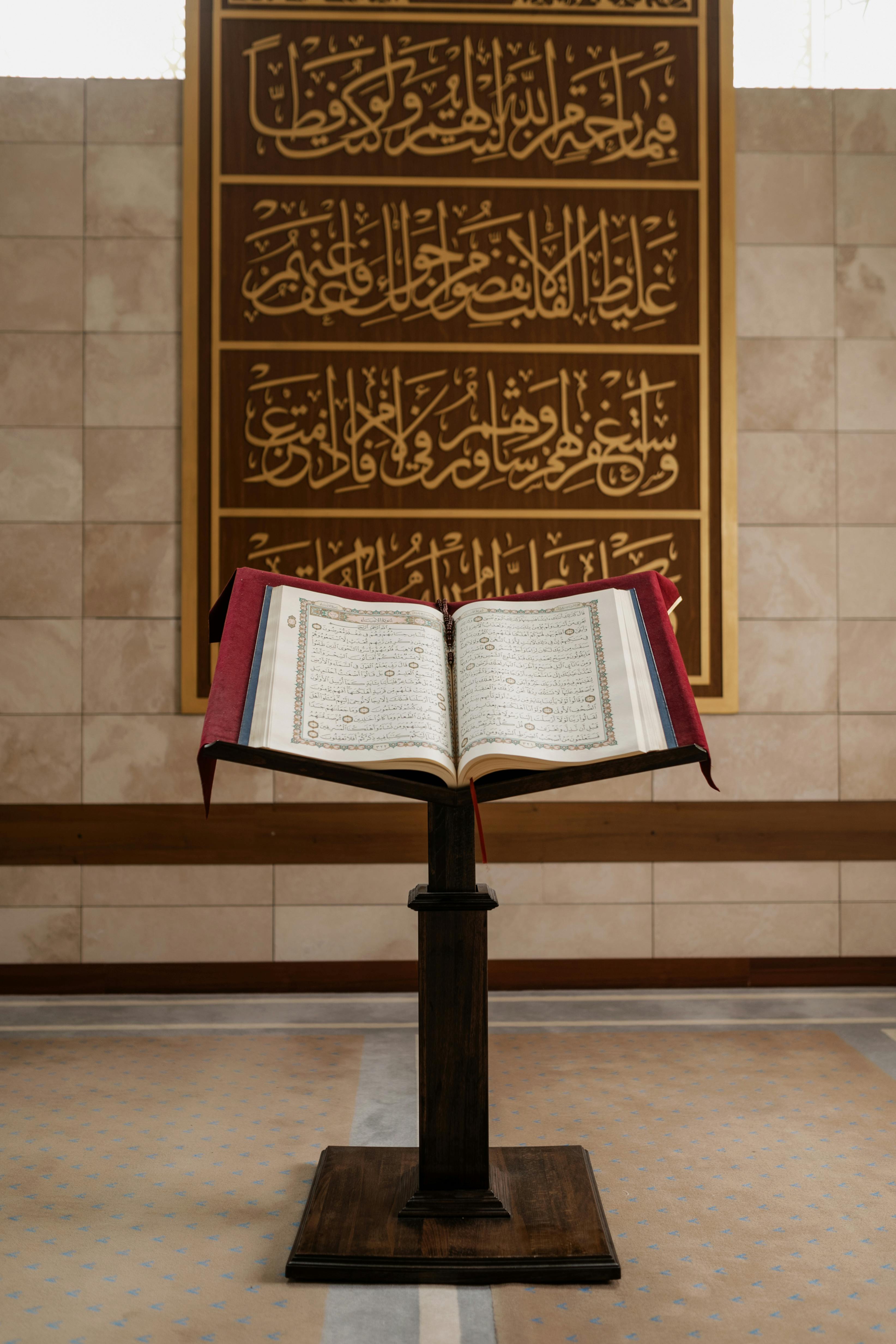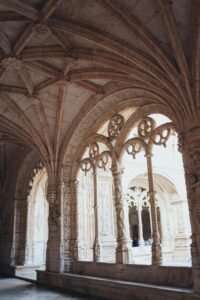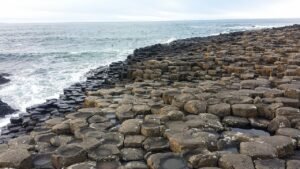
Prepare to be mesmerized as you embark on a journey to the breathtaking Rock of Cashel, a historic site nestled amidst the lush Irish countryside. With roots dating back to the 4th century, this magnificent rock formation encompasses a stunning medieval castle, a captivating cathedral, and a host of other architectural wonders. As you step foot onto this enchanting site, you will be transported back in time, immersing yourself in the rich history and captivating beauty that surround you. Get ready to explore the majestic Rock of Cashel and uncover its hidden treasures that have stood the test of time.

History of the Rock of Cashel
The Rock of Cashel, also known as St. Patrick’s Rock, is a historic site located in County Tipperary, Ireland. It holds great significance in Irish history and has been a prominent landmark for centuries.
The early centuries of the Rock of Cashel
The history of the Rock of Cashel dates back to the early centuries, with evidence of settlement as early as the 4th century. The rock itself is an outcrop of limestone, rising 200 feet above the surrounding plains. It offered a strategic location for early settlers, providing security and a vantage point over the land.
The rise of Christianity at the Rock of Cashel
During the 5th century, the Rock of Cashel underwent a significant transformation with the arrival of Christianity. It became the seat of the Kings of Munster and gained religious importance. Many religious structures were built on the site, making it a center of Christian activity in Ireland.
The invasion and destruction of the Rock of Cashel
In the 12th century, the Rock of Cashel faced its share of turmoil when it was invaded by the Anglo-Normans. The invading forces sacked the site, leaving much of it in ruins. Despite the destruction, the Rock of Cashel remained a symbol of Irish heritage, resilience, and spirituality.
The restoration and maintenance of the Rock of Cashel
In the years following the invasion, efforts were made to restore and maintain the Rock of Cashel. Restoration projects took place, preserving what was left of the original structures and making the site accessible to visitors. Today, the Rock of Cashel stands as an exemplar of architectural heritage and a testament to Ireland’s rich history.
Architecture and Structures on the Rock of Cashel
The Rock of Cashel is home to several impressive architectural structures that have stood the test of time. These structures provide a glimpse into the past and showcase the architectural prowess of their time.
The Cormac’s Chapel
One of the most renowned structures on the Rock of Cashel is Cormac’s Chapel. Constructed in the 12th century, it is a prime example of Irish Romanesque architecture. The chapel features exquisite stone carvings, intricate murals, and impressive craftsmanship, making it a must-see for visitors.
The Round Tower
Another notable structure on the Rock of Cashel is the Round Tower. This cylindrical tower, standing approximately 90 feet tall, was built in the 12th century. Round towers were often used as bell towers and places of refuge during times of attack. Despite its age, the Round Tower has retained its shape and serves as an iconic symbol of the Rock of Cashel.
The Cathedral
The Rock of Cashel is also home to a grand cathedral, which was constructed in the 13th century. The cathedral features Gothic architecture, with soaring arches, intricate stained glass windows, and ornate stone carvings. Despite being a ruin, the cathedral still evokes a sense of awe and reverence among visitors.
The Hall of the Vicars Choral
A lesser-known structure on the Rock of Cashel is the Hall of the Vicars Choral. It was built in the 15th century and served as a residence for the priests who sang in the cathedral choir. The hall showcases a blend of Gothic and Renaissance architectural styles, making it a fascinating addition to the Rock of Cashel’s architectural ensemble.

The Legends and Myths of the Rock of Cashel
The Rock of Cashel is not only steeped in history but is also enveloped in various legends and myths that add to its allure and intrigue.
The Devil’s Bit
One of the most famous legends connected to the Rock of Cashel is the story of the Devil’s Bit. According to local folklore, the devil took a bite out of the mountain now known as the Devil’s Bit, and in his rage, spat it out, creating the Rock of Cashel. This mythical tale adds a touch of mystique to the already captivating landscape.
The Conversion of Aengus the King
Another legend associated with the Rock of Cashel is the Conversion of Aengus the King. It is believed that St. Patrick, the patron saint of Ireland, converted Aengus, the King of Munster, to Christianity. This event played a significant role in the rise of Christianity in Ireland and its subsequent association with the Rock of Cashel.
The Miraculous Healing Powers of St. Patrick
St. Patrick also features prominently in another legend surrounding the Rock of Cashel. It is said that St. Patrick healed a blind man by pressing his crozier against his eyes. This act of healing is believed to have taken place on the Rock of Cashel and further solidifies its reputation as a place of spiritual significance.
The Coronation Stone
Lastly, the Coronation Stone holds a mythical importance at the Rock of Cashel. Legend has it that this stone was brought to Ireland by the biblical figure, Jacob. It is said to have been used as the coronation stone for the Kings of Munster, adding a touch of regality and mysticism to the historical site.
The Rock of Cashel Today
Today, the Rock of Cashel is a popular tourist destination, offering visitors a unique blend of history, architecture, and natural beauty.
Visitor Experience and Facilities
The Rock of Cashel provides a comprehensive visitor experience, catering to tourists of all ages and interests. There is a visitor center that offers information about the site’s history, architecture, and legends. Additionally, there are facilities such as restrooms, a gift shop, and a café, ensuring a comfortable visit for all.
Guided Tours and Audio Guides
For a more in-depth understanding of the Rock of Cashel, guided tours and audio guides are available. Knowledgeable guides will provide insights into the site’s history, architecture, and legends, enhancing the overall experience and allowing visitors to delve deeper into the Rock of Cashel’s rich heritage.
Events and Festivals at the Rock of Cashel
Throughout the year, the Rock of Cashel hosts various events and festivals that celebrate Irish culture, history, and traditions. These events include live music performances, theatrical productions, and traditional Irish dancing. Attending these events can provide visitors with a unique and immersive experience of the Rock of Cashel and its vibrant heritage.
Conservation and Preservation Efforts
Preserving the Rock of Cashel for future generations is of utmost importance. Conservation efforts are ongoing to ensure that the architectural structures and landscape of the site remain intact. Through careful restoration and maintenance, the Rock of Cashel continues to stand as a testament to Ireland’s cultural and historical heritage.

How to Get to the Rock of Cashel
The Rock of Cashel is easily accessible by various modes of transportation.
By Car
If you prefer to drive, the Rock of Cashel is conveniently located close to major roads. From Dublin, take the M7 motorway southbound, and then take the R639 to Cashel. There are parking facilities available near the site.
By Public Transportation
If you prefer public transportation, regular bus services operate to Cashel from major cities such as Dublin, Cork, and Limerick. From the bus station in Cashel, it is a short walk to the Rock of Cashel.
By Tour Bus
Another option is to join a guided tour that includes transportation to the Rock of Cashel. These tours often provide additional insights and commentary on the journey, making it a convenient and informative way to reach the site.
Nearby Attractions and Accommodation
There are several attractions near the Rock of Cashel that are worth exploring, as well as accommodation options for those planning an extended stay in the area.
Hore Abbey
Located just a short walk from the Rock of Cashel, Hore Abbey is a fascinating historical site in its own right. This medieval monastery offers stunning views of the Rock of Cashel and provides visitors with a glimpse into Ireland’s monastic past.
Swiss Cottage
For those interested in picturesque architecture and beautiful landscapes, the nearby Swiss Cottage is a must-visit. This 19th-century cottage, designed in the ornamental style, is surrounded by lush gardens and offers a tranquil escape from the bustle of the Rock of Cashel.
Bru Boru Cultural Centre
For a taste of Irish culture and traditional arts, the Bru Boru Cultural Centre is a must-see attraction. Located just a short drive from the Rock of Cashel, this center showcases live music, dance, and theatrical performances that highlight Ireland’s rich cultural heritage.
Accommodation Options in Cashel
For those planning an extended stay in the area, there are several accommodation options in Cashel catering to a range of budgets and preferences. From charming bed and breakfasts to luxury hotels, visitors can find a comfortable place to rest and rejuvenate after exploring the Rock of Cashel and its surrounds.
Tips for Visiting the Rock of Cashel
To make the most of your visit to the Rock of Cashel, here are some helpful tips:
Best Time to Visit
The Rock of Cashel can get busy during peak tourist seasons, so it is advisable to visit during off-peak times to avoid crowds. Early mornings or weekdays are generally quieter and allow for a more enjoyable and immersive experience.
Duration of Visit
Plan for a few hours to explore the Rock of Cashel thoroughly. This will allow enough time to visit each structure, take in the panoramic views, and delve into the site’s history and legends.
Wear Comfortable Shoes
The Rock of Cashel involves some walking, especially if you wish to explore the surrounding areas. Be sure to wear comfortable shoes to make your visit more enjoyable and avoid any discomfort.
Respect the Site’s Rules and Regulations
As a site of historical and spiritual significance, it is important to respect the Rock of Cashel’s rules and regulations. This includes not climbing on the structures, refraining from touching any artifacts, and following designated paths to ensure the preservation of the site for future generations.
Conclusion
The Rock of Cashel is a timeless treasure that holds immense historical, architectural, and cultural significance. Its rich past, stunning architecture, and captivating legends make it a must-visit destination for anyone seeking to explore Ireland’s heritage. Whether you are intrigued by history, fascinated by architecture, or looking to immerse yourself in Irish folklore, the Rock of Cashel offers an unforgettable experience that will leave you in awe of Ireland’s profound legacy. So, plan your visit, explore these majestic grounds, and discover the magic of the Rock of Cashel for yourself.







